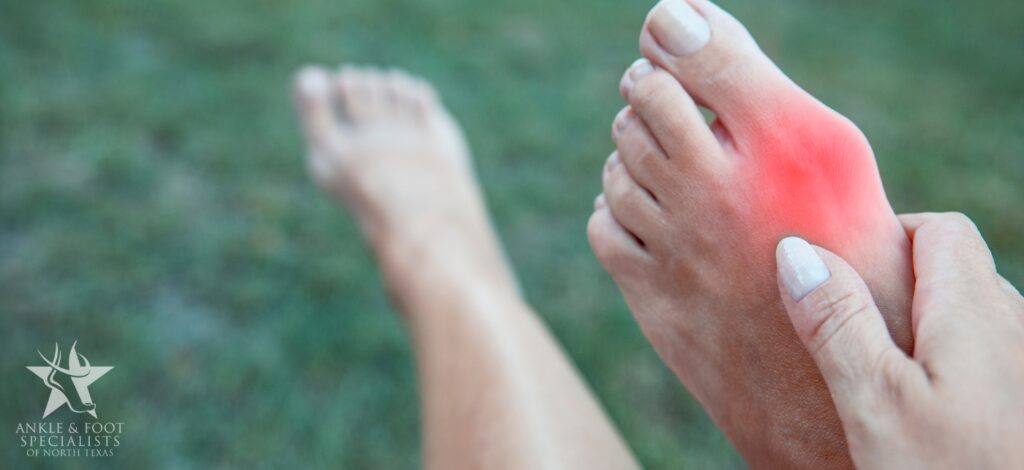Bunions are a common foot condition that can cause significant discomfort and pain. If you’re struggling with a bunion, understanding your treatment options is essential. At Ankle and Foot Specialists North Texas, we offer expert care and advanced surgical solutions to help you find relief.
What is a Bunion?
A bunion is a bony bump that forms on the joint at the base of your big toe. This occurs when some of the bones in the front part of your foot move out of place, causing the tip of your big toe to be pulled toward the smaller toes and forcing the joint at the base of your big toe to stick out. Bunions can lead to pain, swelling, and redness around the affected joint, making it difficult to wear shoes or walk comfortably.
When is Bunion Surgery Needed?
Bunion surgery, also known as bunionectomy, is often considered when non-surgical treatments fail to relieve symptoms. You might be a candidate for bunion surgery if you experience:
- Severe foot pain that interferes with your daily activities
- Chronic inflammation and swelling that doesn’t improve with rest or medications
- Toe deformity, where the big toe drifts toward the smaller toes
- Inability to find comfortable footwear due to the bunion
- Stiffness and restricted movement of your big toe
Types of Bunion Surgery
There are several surgical techniques to correct bunions, and the best method depends on the severity of your condition and your specific needs. Common types of bunion surgery include:
- Osteotomy: The surgeon cuts and realigns the bones in your big toe.
- Arthrodesis: This involves fusing the bones of the affected joint.
- Exostectomy: The surgeon removes the bump from your toe joint.
- Lapidus Procedure: This stabilizes the first metatarsal bone by fusing it with a bone in your mid-foot.
What to Expect During Surgery
Bunion surgery is typically performed on an outpatient basis, meaning you can go home the same day. The procedure involves:
- Anesthesia: Local or general anesthesia will be administered to ensure you don’t feel pain during the surgery.
- Incision: A small incision is made near the bunion.
- Correction: The surgeon realigns or removes the bones and tissues to correct the deformity.
- Closure: The incision is closed with stitches, and a bandage is applied.
Recovery After Surgery
Recovery from bunion surgery can take several weeks to months, depending on the extent of the procedure. Key aspects of recovery include:
- Rest and Elevation: Keep your foot elevated to reduce swelling and promote healing.
- Use of Crutches or a Walker: You may need these aids to avoid putting weight on your foot.
- Wearing a Surgical Shoe: This protects your foot and helps maintain proper alignment.
- Physical Therapy: Exercises may be recommended to restore strength and range of motion.
Benefits of Surgery
While the thought of surgery can be daunting, the benefits of bunion surgery can be life-changing. These benefits include:
- Relief from chronic pain
- Improved foot function and mobility
- Ability to wear a wider range of footwear comfortably
- Enhanced quality of life
Schedule Your Consultation Today
If you’re suffering from a painful bunion, don’t wait any longer to seek relief. At Ankle and Foot Specialists North Texas, our experienced podiatrists are here to help you every step of the way. Contact us today to schedule an appointment and take the first step toward pain-free living.
Call us at (903) 484-3668 or click here to book your consultation now!



